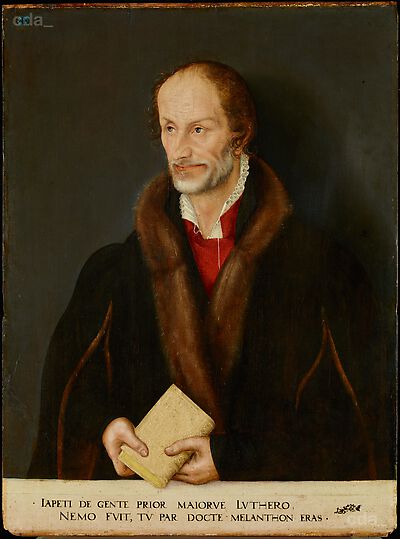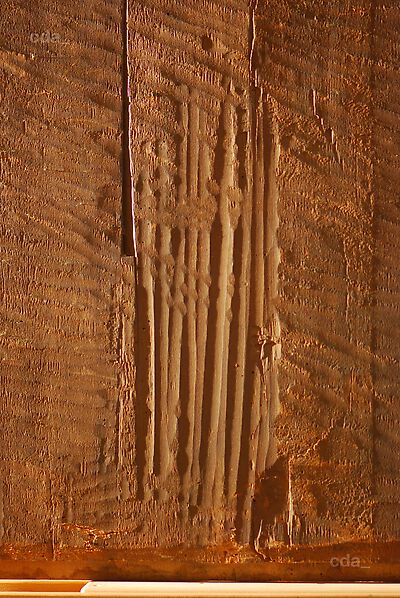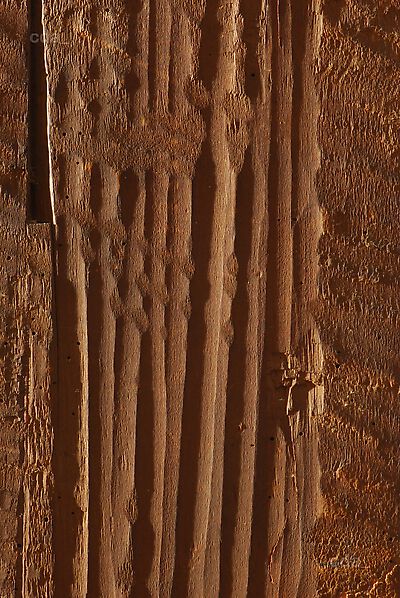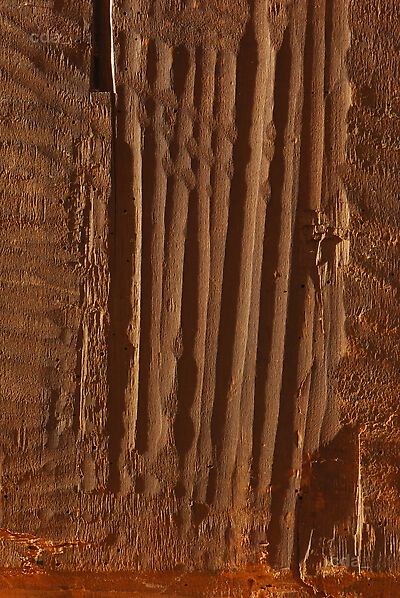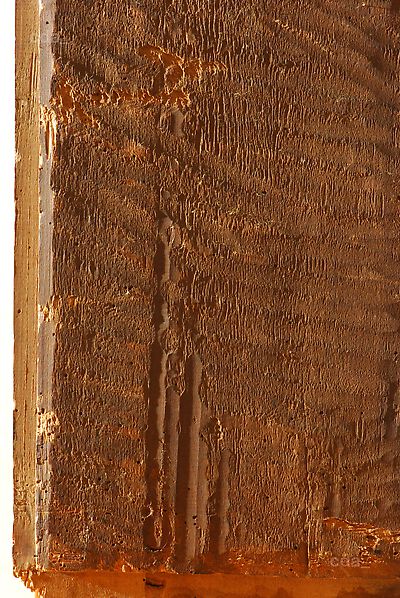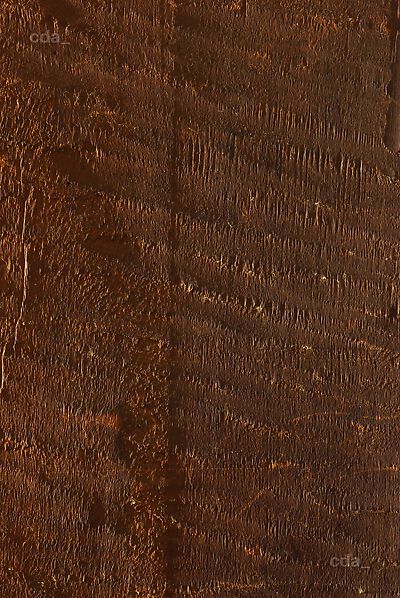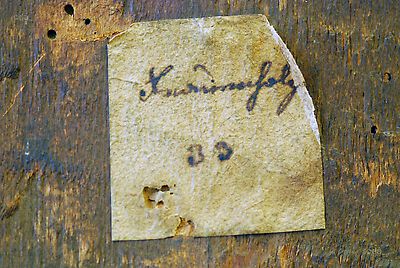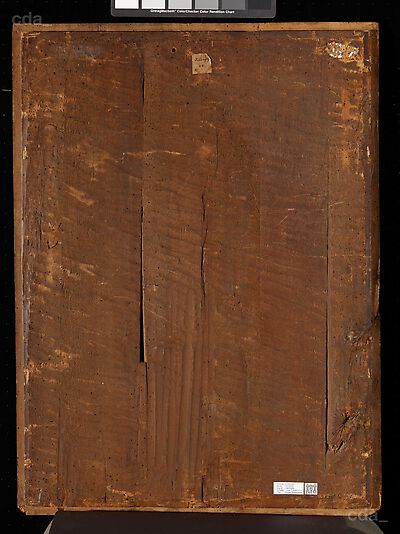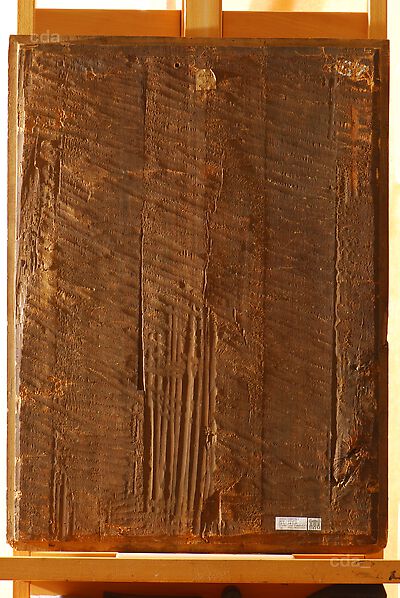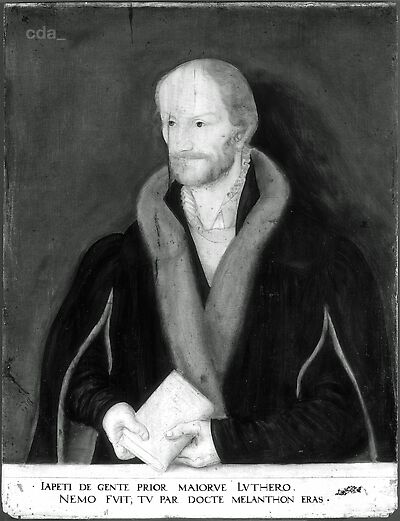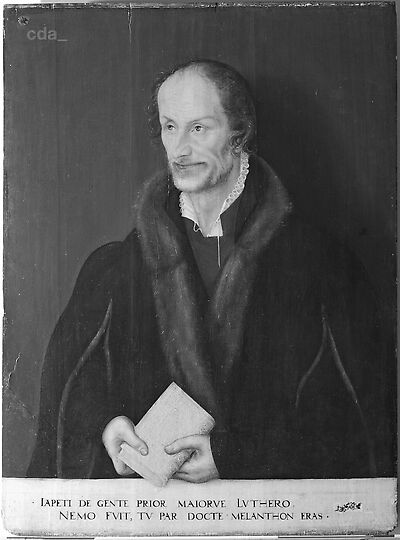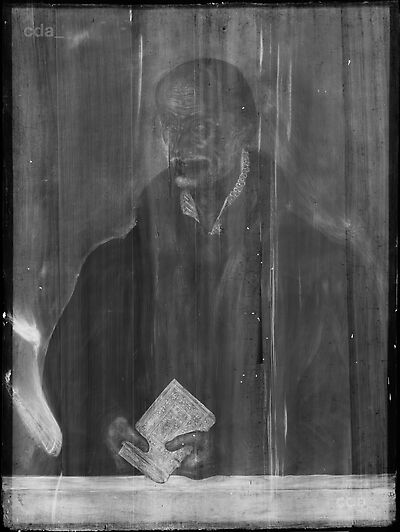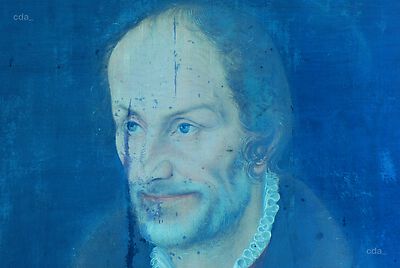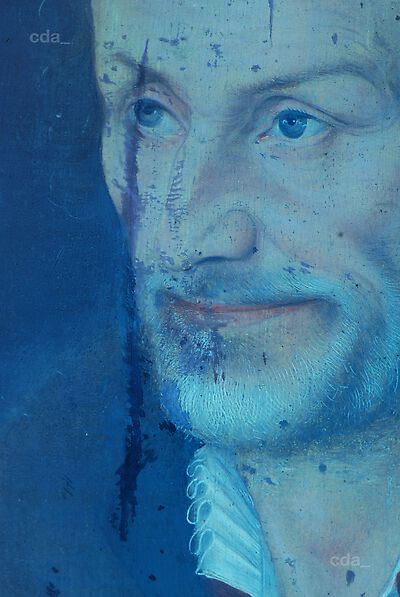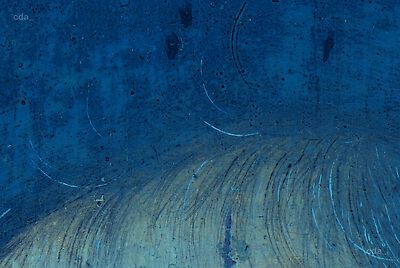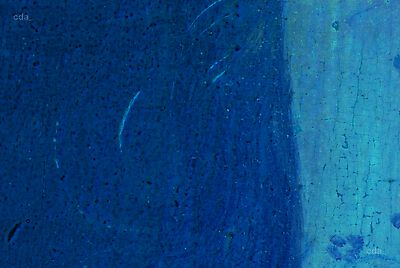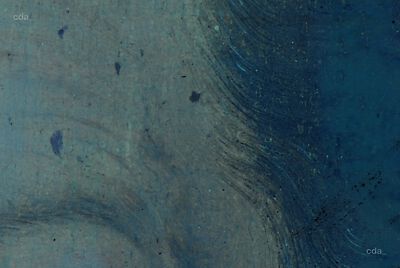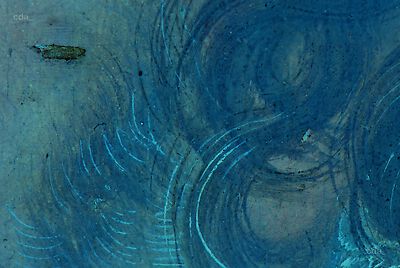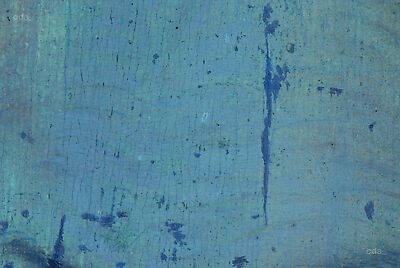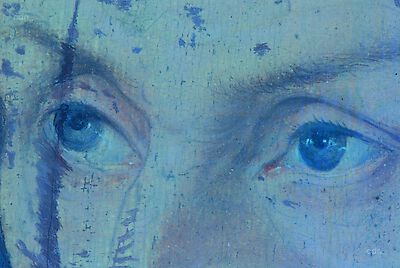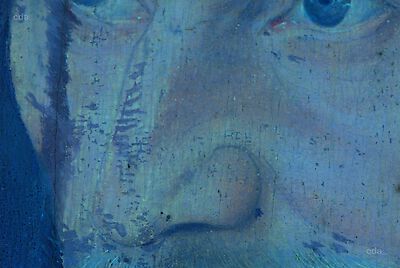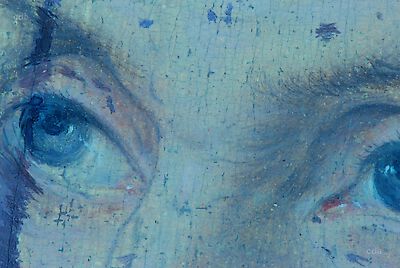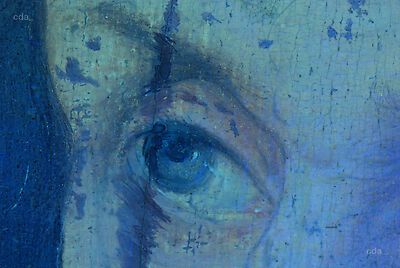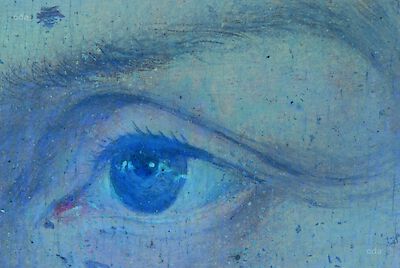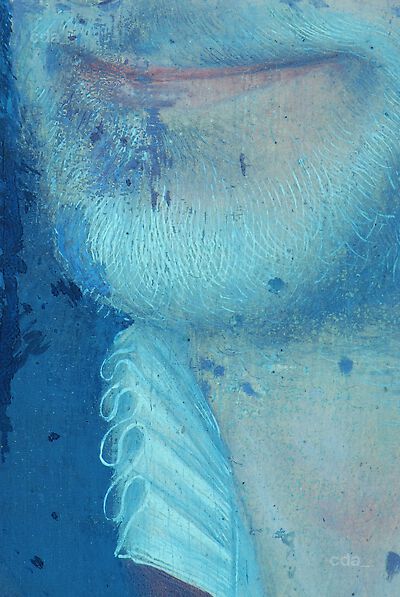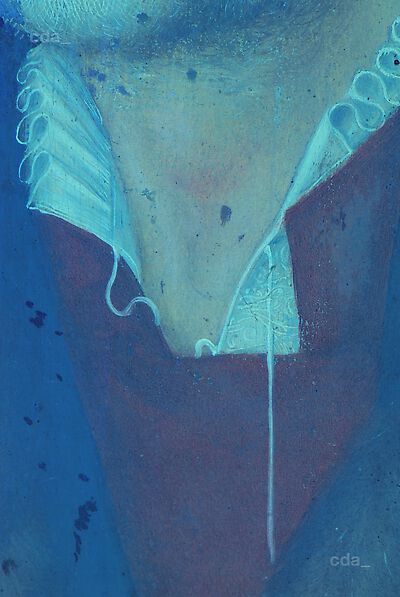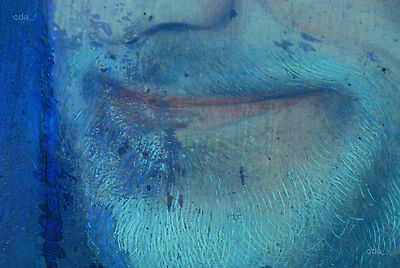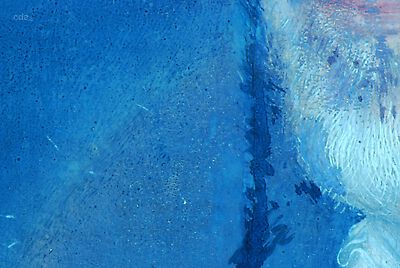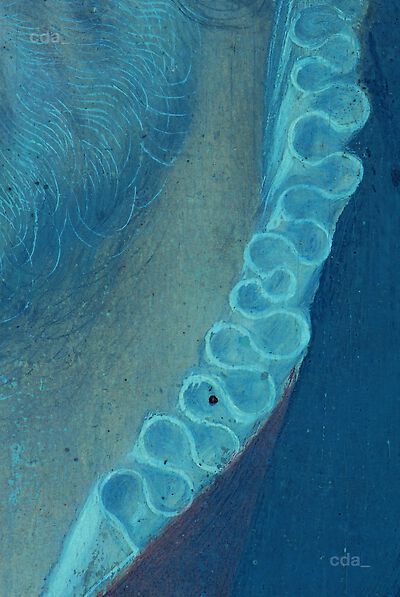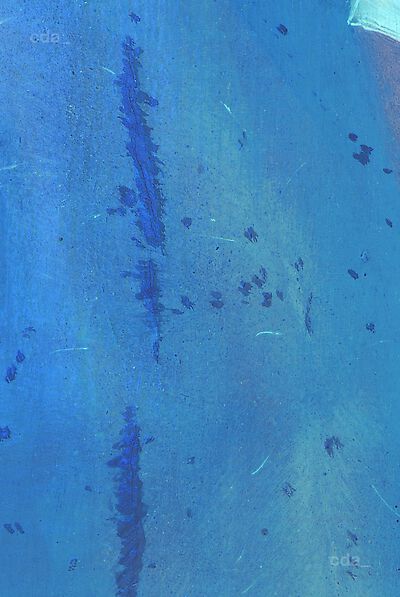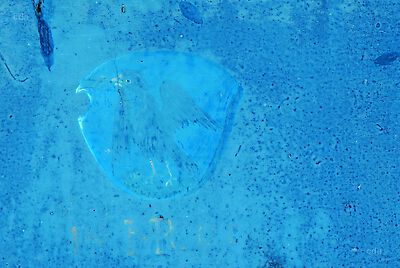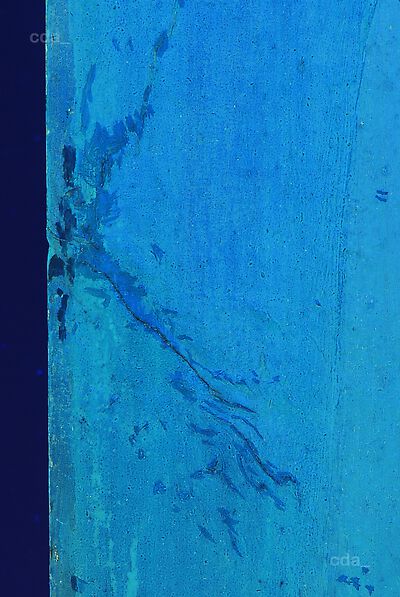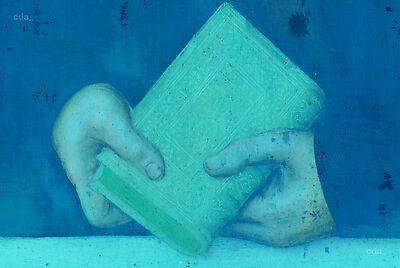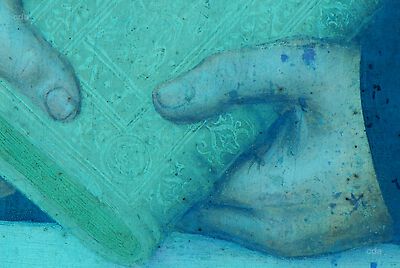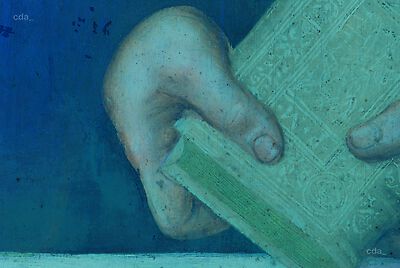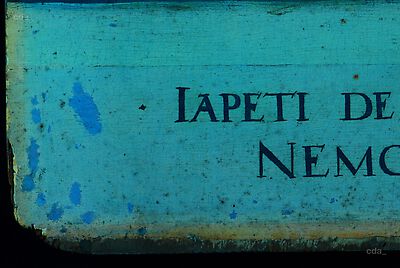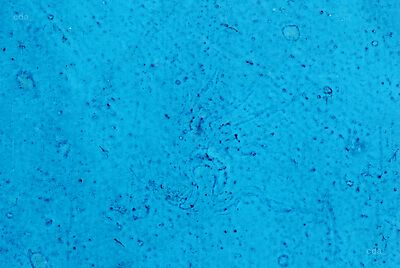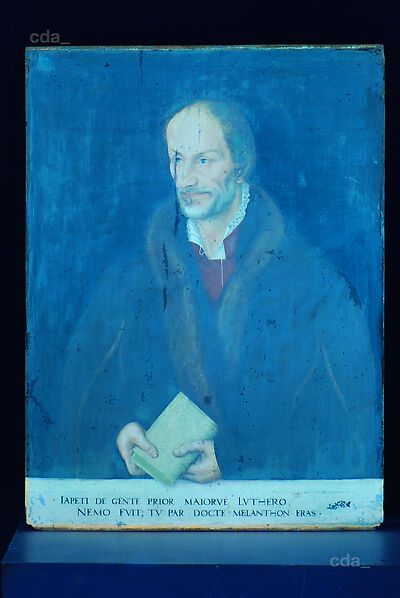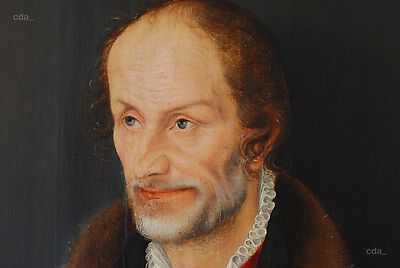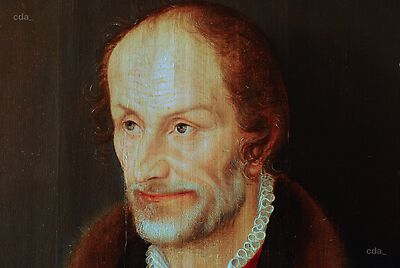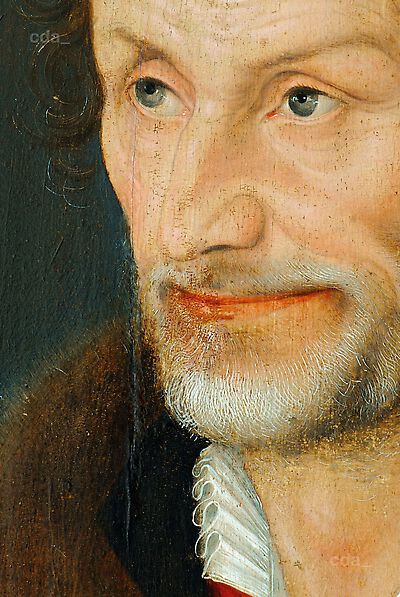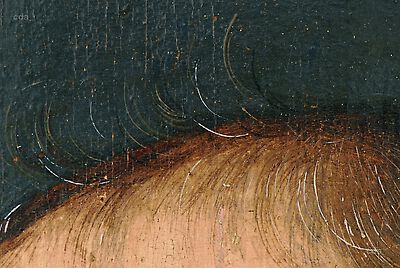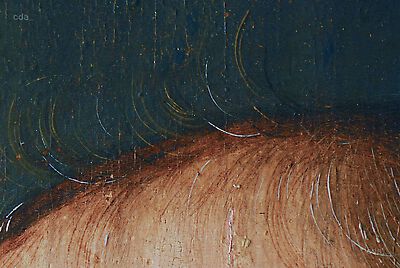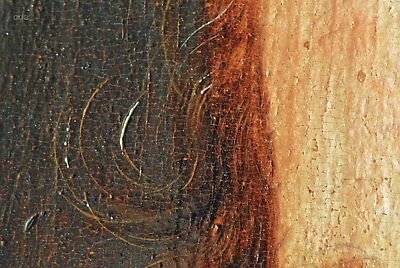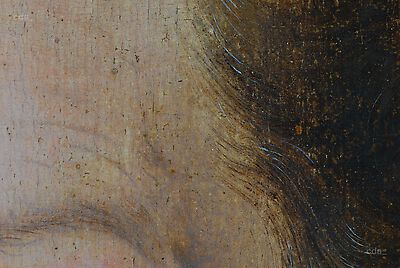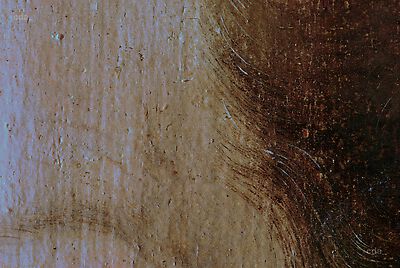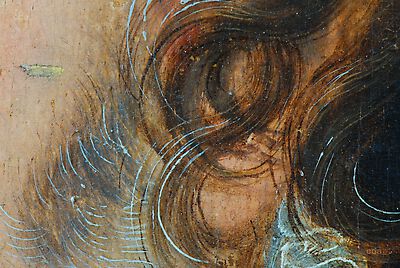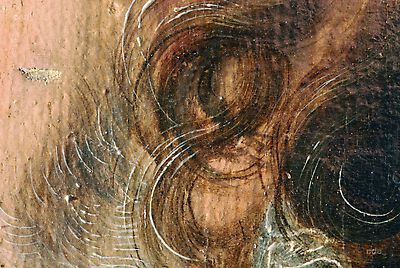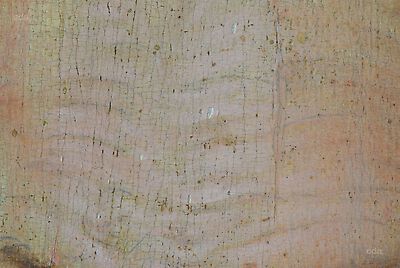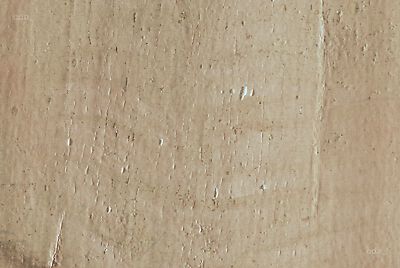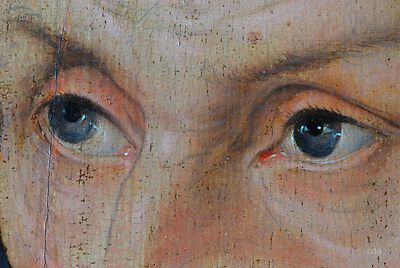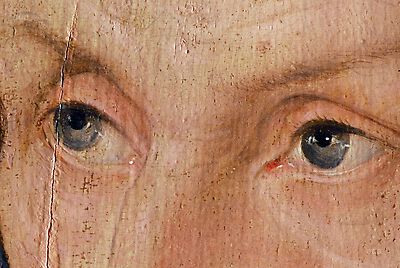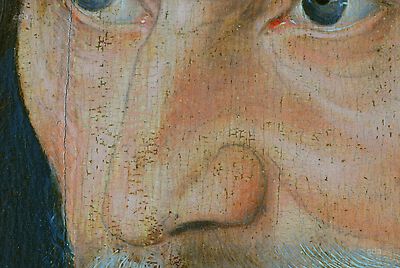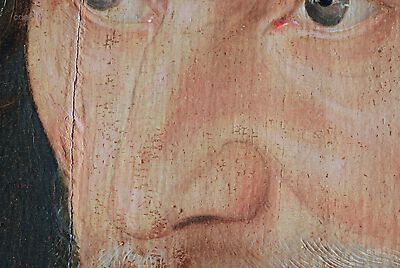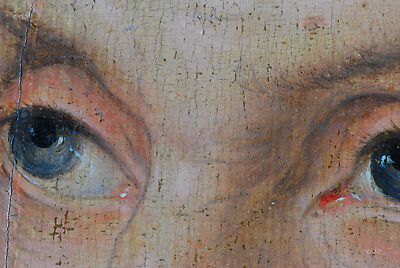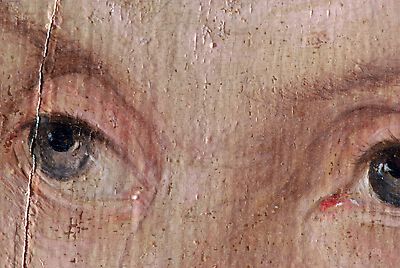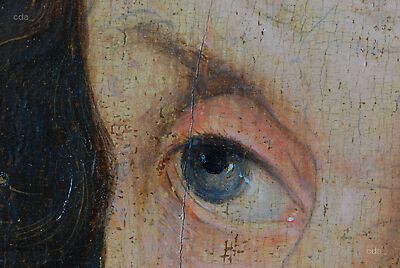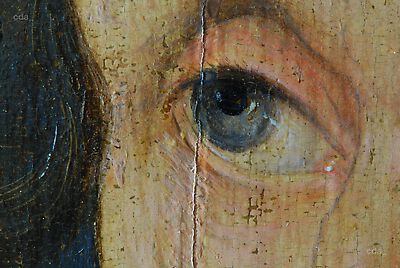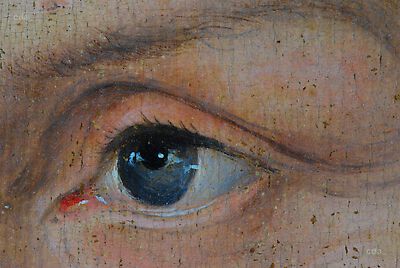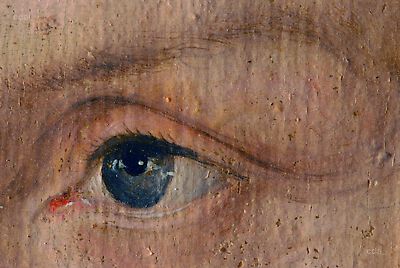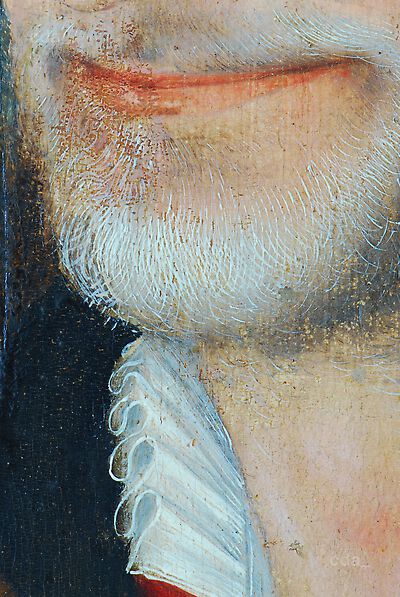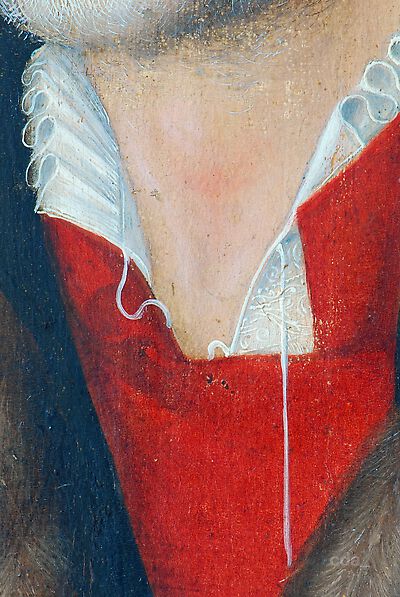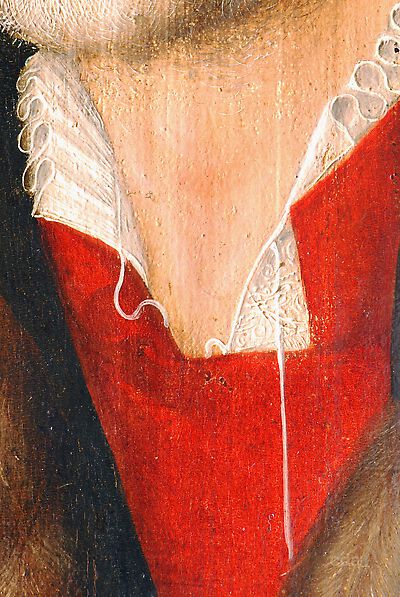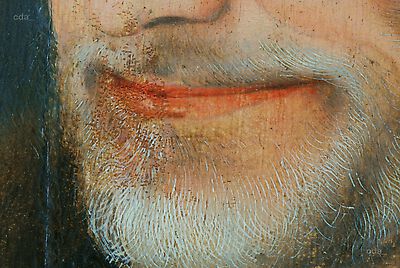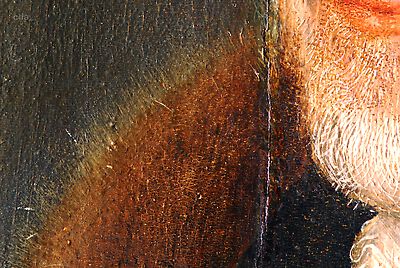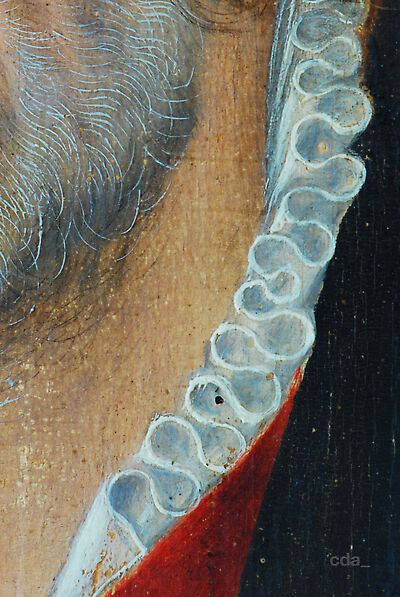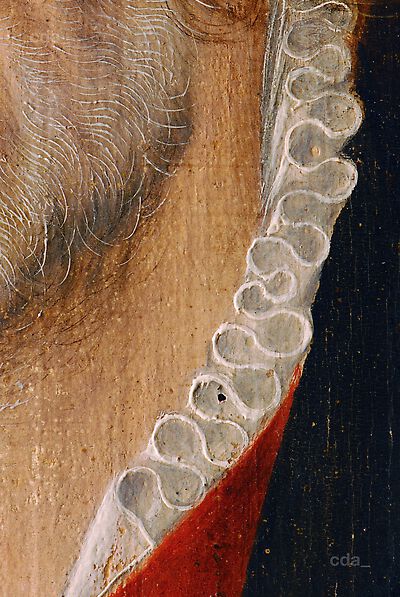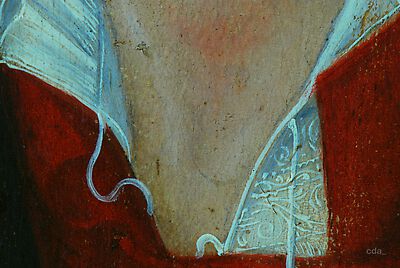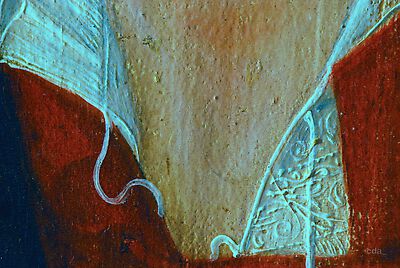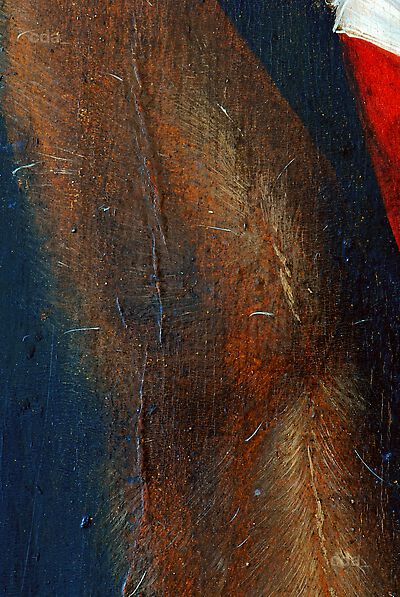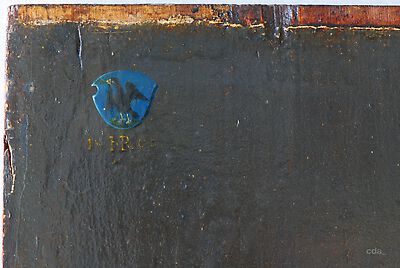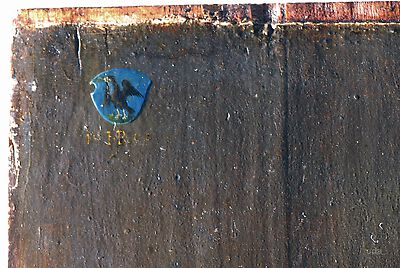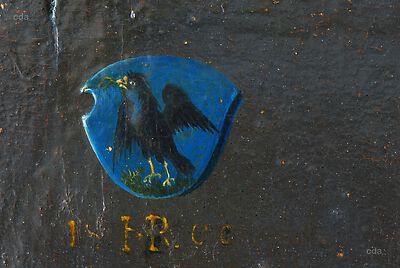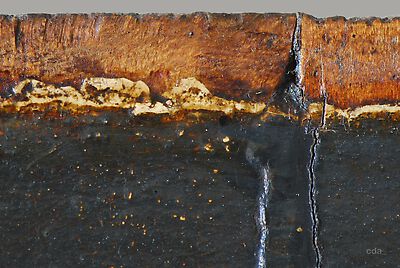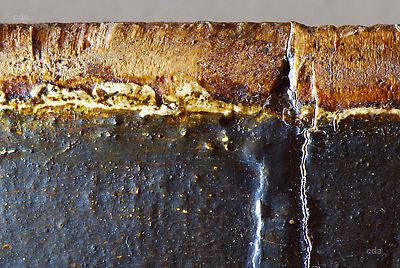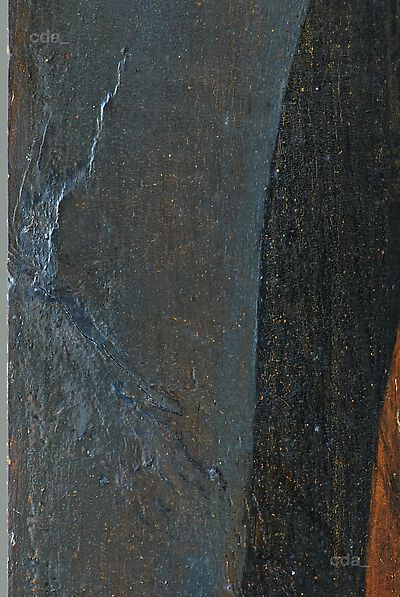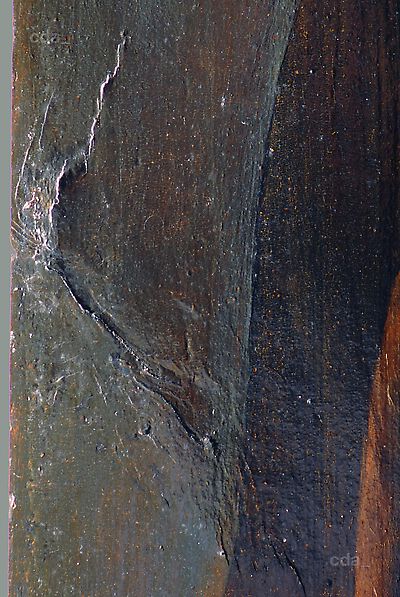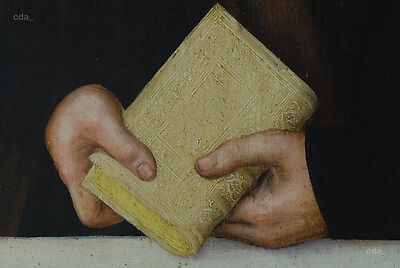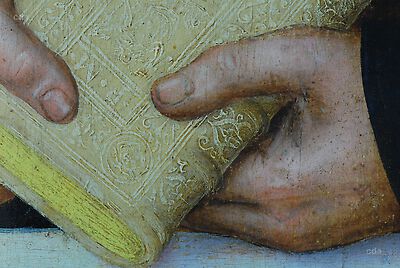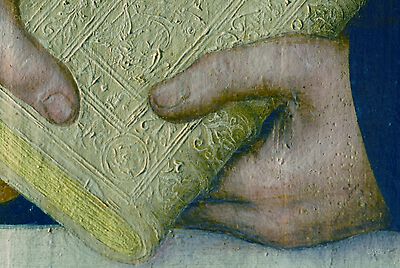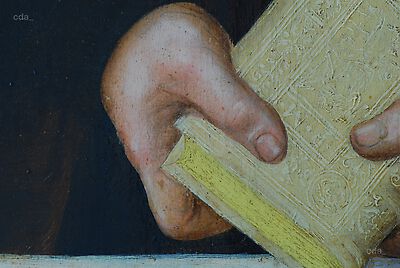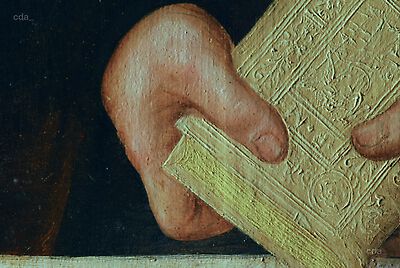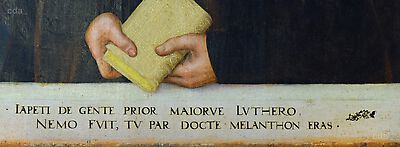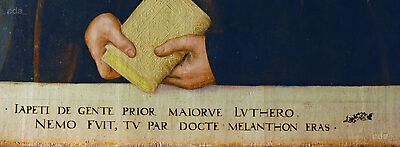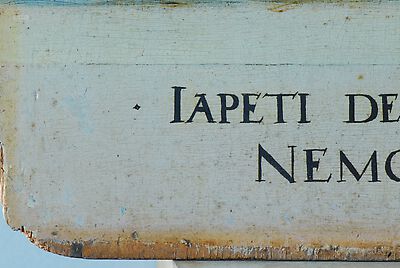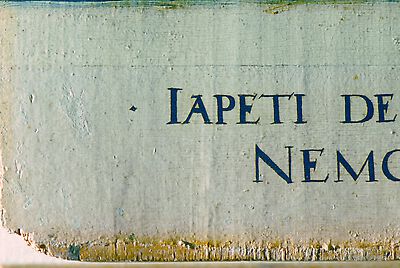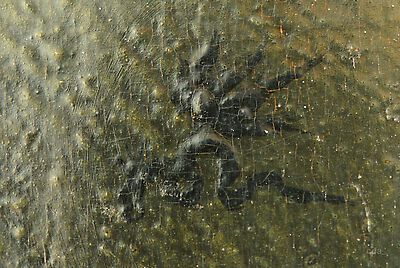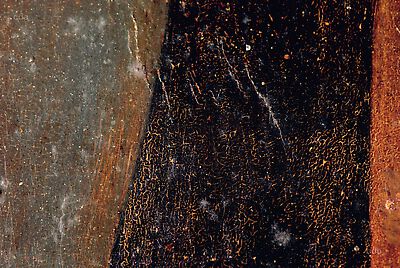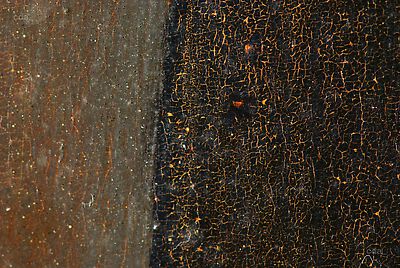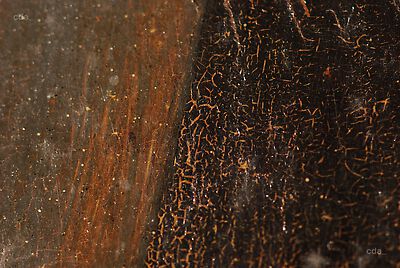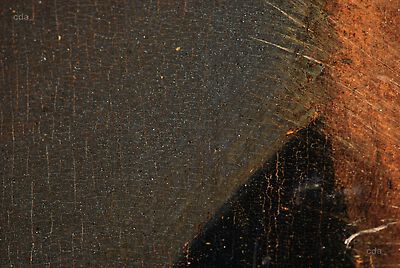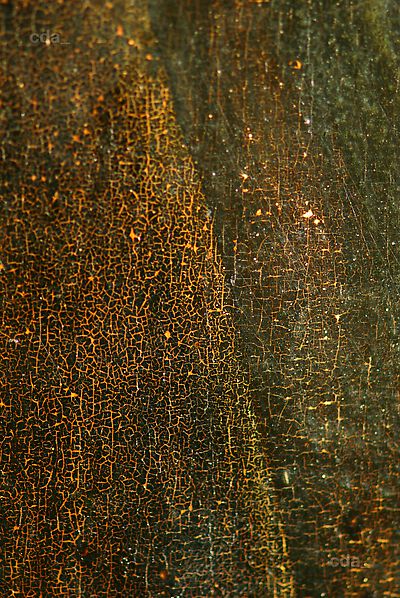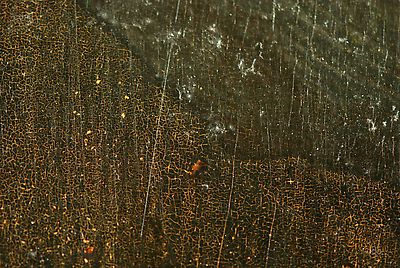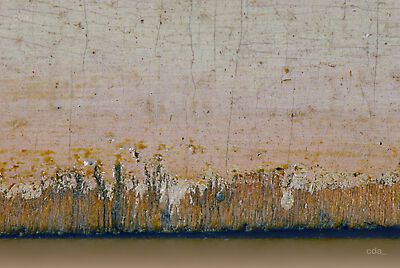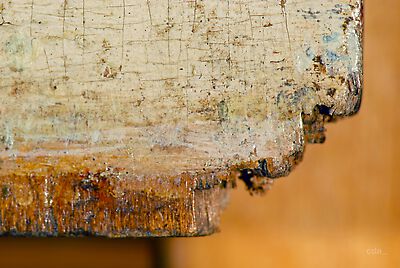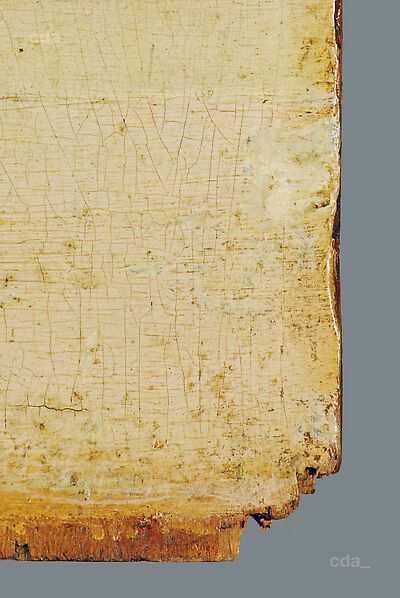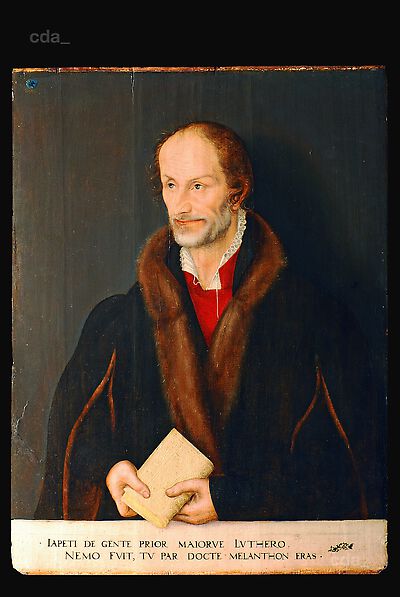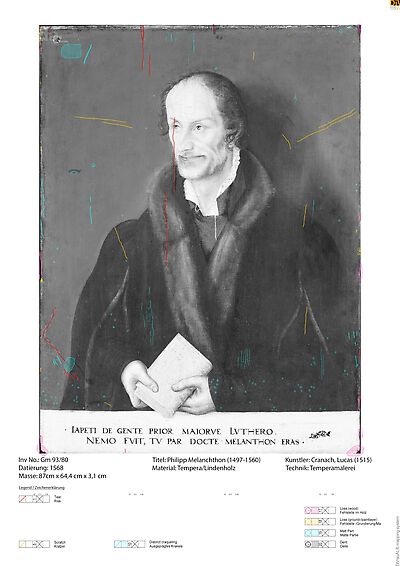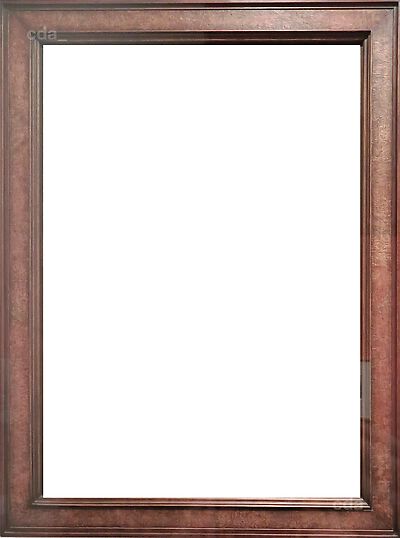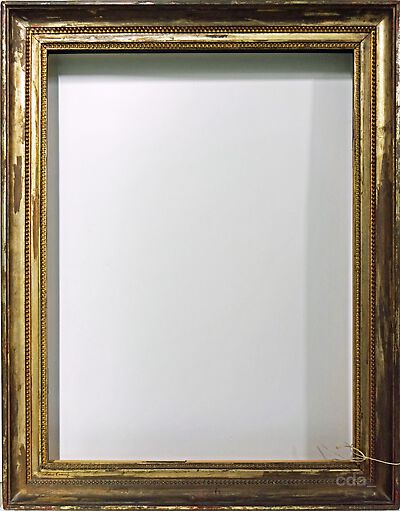Support
Limewood
The wooden panel is up to 8 mm thick at the edges. The total thickness is 2.8 cm. The panel consists of five vertically aligned boards (the wood grain is vertical). The x-radiograph shows that the planks were glued together with butt-joins. The planks are tangentially cut and exhibit diagonally aligned annual rings. Heartwood was joined to sapwood. Viewed from the front the heartwood is on the left side of all planks and the sapwood on the right.
The width of each board is as follows (from left to right):
board 1: 8.8 (top); 9.8 cm (bottom)
board 2: 12.2 cm (top); 12.2 cm (bottom)
board 3: 20.9 cm (top); 20.9 cm (bottom)
board 4: 13.8 cm (top); 14.2 cm (bottom)
board 5: 9.5 cm (top); 7.3 cm (bottom)
On the lower half of the painting at the left edge there are two knots one above the other that were neither removed nor covered during the production of the panel. The reverse of the painting exhibits rather coarse tooling marks. There are numerous troughs of varying widths running vertically, horizontally and diagonally from left to right across the joins. These may result from the use of a block plane. The widest are 2 cm. The wooden panel exhibits a rebate with a maximum width of 2 cm on all four sides. The width of the rebate ranges between about 1.5 cm and 1.8 cm. It has a chamfered edge.
Ground and Imprimatura
The ground application is a white chalk admixture. An imprimatura containing lead white was probably applied over this. The x-radiograph shows white stripy brushstrokes applied diagonally from left to right running counter to the painted forms. In raking light these brushstrokes are also visible on the surface in the area of the coat and the background. A barbe is only present at the top and the bottom edges of the panel. It is slightly raised towards the edge. At the bottom edge of the painting there are traces of original paint lying directly on the bare wood.
Underdrawing
Examination employing infrared reflectography revealed the relatively fine black lines of the underdrawing, which was probably executed with a pointed black drawing implement. In some sections these lines are visible with the naked eye, which is probably due to the increased transparency of the paint caused by the lead white content. This affects the face where lines indicate the eyes, the nose, the mouth and the wrinkled forehead, but is also evident in the hands where in addition to the outlines some hatching strokes within the form are visible. Furthermore a detailed underdrawing in the area of the frilled collar is also visible. The underdrawing is relatively binding for the final painted version.
Paint Layers and Gilding
PIGMENTS: (X-ray fluorescence spectroscopy)
At all the points measured lead was detected (probably a lead based pigment in the ground or the imprimatura).
Grey: 1,11 (background): lead white, probably carbon black, copper based pigment
Red: 4,5 (flesh paint: cheeks, lips): some vermilion, lead white; 7 (shirt): vermilion, lead white, possibly some lake (microscopy)
Blue 2 (coat of arms): prussian blue (therefore applied after 1706)
White: 8,13 (collar, underpainting) lead white
Yellow: 3 (inscription): orpiment (therefore probably later); 12 (book): lead-tin-yellow
Brown: 9 (fur): probably ochre
Black: 6,10 (collar, coat) probably carbon black (inscription): probably carbon black, copper based pigment
Gound: 10 (exposed white ground): a lot of calcium (probably a chalk ground)
The artist probably employed tempera paint. Fine cracks in the upper paint layer are visible in the dark background and the coat. They are relatively wide and slightly raised and appear to have developed during the drying process of a water-based binding medium with high glue content. In other areas impasto suggests the use of a binding medium with a higher ratio of oil. There is a thin, transparent yellowish brown layer over the white imprimatura. In the darker areas of shadow a more dense paint application was added before continuing. This created the underlayer for the outer areas of shadow in the flesh paint, the hair and the fur. The artist may have wished to give the cooler grey background a warmer, greenish tone. This layer of underpaint could not be found in other areas of the painting when examined under the stereomicroscope. Subsequently the artist applied the flesh paint and executed the gown. The painted contours of the background overlap – with the exception of minor corrections – the figure and were therefore added afterwards. Then the window ledge at the bottom edge was completed. The area for the hair was held in reserve while the background paint was applied. Later highlights in the form of thin, impasto light grey and white hair strands were applied over the base tone. They were painted over the background and in the case of the beard over the flesh paint. Similarly the yellowish brown, thicker layer of underpaint in the area of the fur was held in reserve while the gown was completed. The fine hairs of the fur were then applied over the black paint of the gown. In the greenish grey background lead white and carbon black as well as copper based pigments were detected employing x-ray fluorescence spectroscopy. Under the stereomicroscope isolated yellow pigments are also visible. Unusually the pigment smalt - frequently employed by Lucas Cranach the Younger in backgrounds - was not detected in any form on this painting. A light layer of yellow paint creates the block shape of the book. The cover consists of a reddish white pigmented layer over which the decoration was applied with white highlights. The window ledge which runs parallel to the bottom edge exhibits the following paint sequence: at the bottom is a cream coloured layer; above this along the edge a dark strip containing numerous red pigments creating a pinkish tone that articulates perspective. The inscription painted in black was added last. The varnish is not original.
It can be confirmed that the painting CDA.DE_DHM_Gm93-80 ‘Philipp Melanchthon (1497-1560)‘ corresponds the use of material and technique with its pendant CDA.DE_DHM_Gm93-79 ‚Martin Luther (1483-1546)’.
Framing
previous frame (no longer used), but not original frame: wood, oil gilding (silver), yellowish brown coating
present frame: profiled battens, the base is pine wood with attached cherry wood battens and stained verneer.
Dimensions of the present frame: 100 x 78 x 9.5 cm (glazed)
- examined by Mathias Lang
- examined by Ulrike Hügle
